Richard Stallman – the freedom defender whom we may not deserve but definitely need
To know Richard Stallman is to know the true meaning of freedom. He’s the man behind the GNU project and the free software movement, and the subject of our Techie Tuesdays this week.
This is not a usual story. After multiple attempts to get in touch for an interaction with Richard Stallman, I got a response which prepared me well for what’s coming next. I’m sharing the same with you to prepare you for what’s coming next.
I'm willing to do the interview -- if you can put yourself into philosophical and political mindset that is totally different from the one that the other articles are rooted in.
The general mindset of your articles is to admire success. Both business success, and engineering success. My values disagree fundamentally with that. In my view, proprietary software is an injustice; it is wrongdoing. People should be _ashamed_ of making proprietary software, _especially_ if it is successful. (If nobody uses the proprietary program, at least it has not really wronged anyone.) Thus, most of the projects you consider good, I consider bad.
Richard Matthew Stallman, the subject of this week’s Techie Tuesdays, is a unique force to reckon with. As the founder of the Free Software Foundation and the GNU Project, he has done more for the free software movement and for humanity than most.

Apart from exploring his personal life, we bring out some of his ideologies and opinions in this interview -- Whether Aadhaar is good or evil? Would India be better off if Aadhaar had failed completely? Why most of the startups are evil? and more. He even sings a song parody for us.
Excerpts from our conversation with Stallman.
American history and civics
Stallman grew up in New York City and went to a local public school. He was a math whiz and put in a class for bright children where he learnt little bit more advanced math than what most classes taught (but mostly learning on his own). He was impacted early in his childhood by American history and American civics where he learnt about the American Civil War which was fought to abolish slavery. The civil rights movement in the US was hitting its peak because after slavery was abolished, many states practiced legal discrimination against black people. He recalls,
“At that time, they (black people) were campaigning to put an end to that (legal discrimination) which was successful. Protests and, in some cases, killing of non-violent activists by segregationists and advocates of inequality were in news. Even though I wasn't tremendously engaged at the age of 10 years, I got some of this.”
There weren't many computers then. Stallman remembers going to a summer camp a couple of times in 1962-63 where he read a manual for a programming language and got fascinated by it. He says, “I read manuals and started writing programs down on paper. There was no computer available as it was too expensive for a summer camp to have.”
The first time he actually got to see a computer and do something with it was in 1969 at the IBM New York Scientific Centre.
Also read - The untold story of Alan Cooper, the father of Visual Basic
Physics @Harvard because ‘no thesis’
Stallman was always interested in Physics as much as in Maths. For him, the decision to opt for Physics in college was simply a matter of academic requirements. He explains, “To get an honours degree in Mathematics, one had to write a thesis whereas for Physics it didn't require a thesis. I had an experience in my last year in high school where I had a class which required writing long papers and it was really hard for me.” In practice it didn't make any big difference because he took classes in both and was happy to do so. But he didn't take classes of things related to computers because he found another way to work on that.
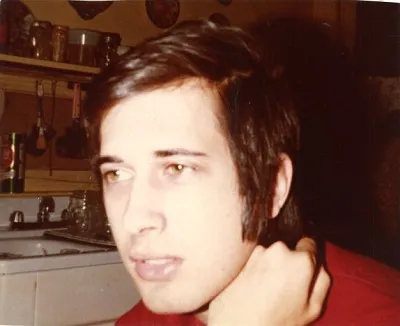
He then, started visiting all the computer installations he could find out about to see if they had any spare manuals from where he could learn about those computers. He visited the MIT Computer Science and Artificial Intelligence Laboratory (CSAIL) as well. He recalls, “They didn't have manuals but they gave me a job instead and I continued working there with brief exceptions until January 1984.”
He worked a bit during the (college) term and a lot during the summer time.
The PhD dropout who found his love for programming
After graduation, he became a PhD student at MIT but dropped out after one year. He says, “It turned out that I never really understood how to do research in Physics. I loved learning about Physics but research just stumped me.”
He was involved in performing international folk dance and had suffered an injury in the final year which meant he couldn't dance anymore. It was heartbreaking and left him totally depressed.
Programming and writing software that people were actually using gave Stallman a kind of satisfaction. So, he dropped out of Physics and started working for MIT CSAIL where he developed software such as Emacs.
Artificial intelligence hadn't reach the point of really doing anything useful then. There wasn't any training of neural networks. Stallman worked on a couple of AI projects with professor Gerry Sussman. Both were programmes which could do reasoning about electrical circuits but not by solving a lot of equations in parallel. They did it by using the laws and methods that a human would use to understand a circuit. They could tell you exactly how they reached every conclusion.
MIT AI lab – where it all started
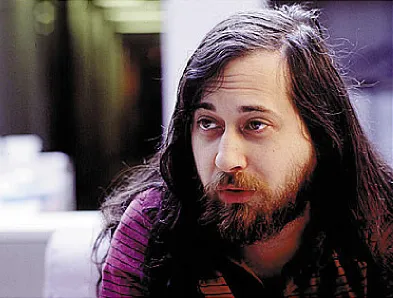
Authorities at the AI lab refused to put any kind of computer security. They knew that if they implemented security, then administrators would take the reins and use it to control the hackers. The hackers didn't want the administrators to control them. They realised that if they didn't make the chains for administrators to use, the administrators would never know how to use it. So, they decided to not implement the chains. Stallman loved that spirit of liberty and became one of the defenders.
Eventually, there was pressure to implement security. Ultimately, in the AI lab on PDP-10, people like Stalman never let them implement real security. But at one point he was scared that they might try to implement file access control. He adds,
We don't mind security features on a personal computer where all they do is to protect the computer of one user. On a shared computer they are intolerable. What we decided to do was, instead of giving somebody so much power that he could force everyone else to obey security rules and punish anyone who disobeyed, build a community in which people treated each other decently because that was their way of life and they wanted to keep it, and it worked.
Stallman would speak to a lot of young hackers who were considered troublemakers. The impact was phenomenal. Almost always they were shocked with the idea that anyone would not despise them. They reconsidered their idea of what they wanted to do. He recalls, “We started to have a lot of them, we called them tourists, who would visit our machines and mostly not cause any trouble to anybody, and some of them actually read and even contributed to our code. One of them later became a professor at AI lab and is still there.”
You may also like - ‘We need better balance between theory and practice’, Bjarne Stroustrup, Father of C++
Lisp Machine Inc v/s Symbolics – the battle which tore the MIT AI lab
Stallman wanted to stay at MIT Lab and continue hacking for the rest of his life. But the option was taken away because the hacker community there was destroyed. This happened because two different spin off companies formed from the AI lab (Lisp Machine Inc and Symbolics ) and started fighting with each other. Both the companies made Lisp Machines which had been historically designed by the people at the AI lab.
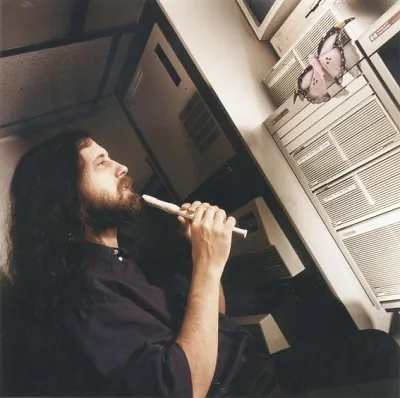
There was a contract between MIT and the two companies (Symbolics and Lisp Machine Inc) which said that they had to provide their changes back to MIT. It didn't say that MIT had the right to redistribute those changes. Initially, however, both the companies contributed their changes to MIT with authorisation to redistribute them. Thus the Lisp Machine systems at MIT continued to advance. The ultimatum by Symbolics put an end to that.
To defy Symbolics, Stallman kept the MIT version of Lisp Machine operating system working and improved it. In fact, he took upon himself to make all the improvements that the hackers at Symbolics (5-6 of them) made. Moreover he couldn’t use their code.
Building free software community – the foundation of GNU Project
After two years, Stallman decided to do something else. He says, “I didn't want to dedicate the rest of my life just to thwarting or punishing a particular wrong. Symbolics had destroyed the community I loved. The free software community of the 70s was dead. I wanted to make another free software community. I wanted to create another community I could love.”
But this couldn't be done with the old software for PDP-10 as it became obsolete. It couldn't be done with Lisp Machine software as well because that was tied to two particular companies. So, Stallman had to start from scratch. This meant he had to think about questions like:
- What kind of computer should this system run on?
- What kind of system should it be in order to do the best possible job of making a free software community?
He decided to develop a Unix like operating system that would be more or less portable so that it could run on all computers. It would be entirely composed of freedom respecting software. He adds,
One more freedom trashing system would be no improvement to the world. People writing them are looking to get power over other people and I wish they would all fail. In fact I would like to make them fail. Part of the purpose of developing the GNU system was to make Unix fail. I wanted to replace the unjust social system of using Unix with the just and freedom respecting software system of using GNU.
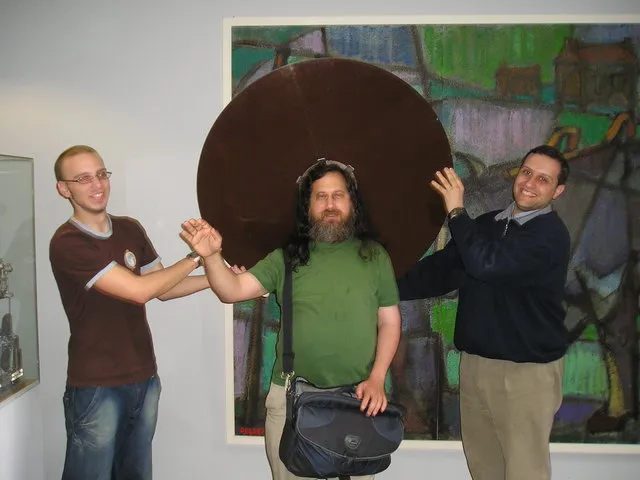
What is free software?
According to Stallman, free software is software that respects people's freedom and community. With a programme, there are two possibilities. Either the user controls the programme or the programme controls the user. When the user controls the programme, that programme is free software. Freedom means having control of your own life and the activities you do in your life. If you use a programme to do an activity, control of the activity requires the control of the programme you use to do it.
Stallman has defined four essential freedoms that the users need in order to have control over any other programme.
- Freedom 0 is the freedom to run the programme anywhere you wish for any purpose.
- Freedom 1 is the freedom to study the programme source code and change it so it does your computing activities the way you wish.
Stallman says, “We also need freedom to join together and work together to make programmes do what we collectively wish. This applies to any group of users that choose to collaborate. This requires two more essential freedoms.”
- Freedom 2 is the freedom to make the exact copies of the programme as you got it and give or sell them to others when you wish.
- Freedom 3 is the freedom to make copies of your modified version and give and sell them to others when you wish.
This way users control the programme, both separately and collectively. Stallman adds,
“With the proprietary software, the users don't have the above mentioned four freedoms and through that programme, the developer has the power over the users. Making non-free software is an attempt to subjugate other people. It should not exist and it's wrong to do this.”
Also read - Meet the co-creator of Julia programming language, Viral Shah
Reaching the point
Stallman wanted everyone to switch to free software so that everyone would have freedom. In order to save some time on writing new software components (for building GNU), he visited the developers of BSD (Berkeley Software Division) which at that time was a modified version of Unix. BSD was a proprietary version of Unix which required an AT&T source licence which cost $50,000. Stallman requested the developers to separate their software and changes from AT&T software and release the software which GNU system can use. He recalls,
“During the 80s, other people were writing various parts of free software which people started using mainly on top of Unix systems. But since we didn't have entire system with every necessary piece, nobody could use a computer in freedom yet. So, all of my plans were about reaching that point.”
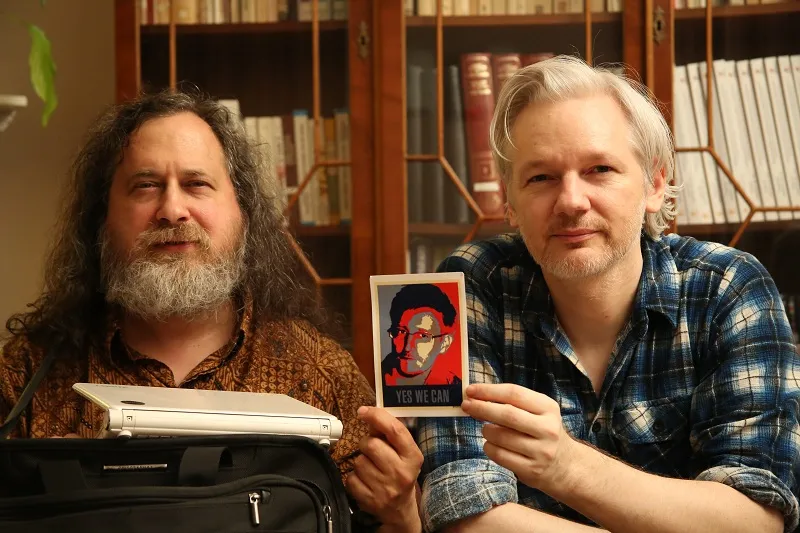
World Wide Web – the culprit
In 1990s, Stallman hardly saw World Wide Web because all the browsers initially were proprietary. He wanted someone to write a free browser but it took a long time for that to happen. Mozilla software was a big step forward for free software and the World Wide Web. Since then, there has been a lot of free software being developed mainly for running web servers. Stallman says,
It's easy to have a really fine web server without any non-free software installed in it at all. But 10 years ago, a bad change started to happen in World Wide Web. People started using JavaScript in very complicated ways such that a site wouldn't work at all if you don't run JavaScript programmes in your browsers. Those programmes are usually proprietary software.
To deal with this, free software community adopted two approaches:
- They convince developers to make their sites work without running any non-free JavaScript software. Though the best option was to make the site work with JavaScript disabled.
- People have started writing extensions to Firefox which handled the functions of the site without running JavaScript from the site.
Similarities with Mahatma Gandhi
Stallman compares the free software movement with the freedom movement which Mahatma Gandhi led in India. He says, “There was a system that subjugated certain people and a part of the system was buying British cloth. So, Gandhi led people to simply refuse the British cloth and make their own cloth (khadi). He basically said, ‘We don't need your cloth so much that we'll surrender our demand for independence.’ The GNU Project is similar to that. There were companies that offered us proprietary software which we could have only on terms that would take away our freedom. What I said is we'll do without your non-free software. We don't want it so much that we'll give up our freedom and we'll make our own software and use it.”
Where does the Free Software movement stand today?
The principal achievement of the Free Software movement is developing the GNU operating system which makes it possible to run a computer and have freedom. GNU is normally used together with the kernel Linux. Stallman says,
Millions of people use this system. Most of them do not respect our work. They refer to the system as Linux and think that it was started by Linus Torvalds in 1991. They aren't aware that it's a GNU system and was started by me in 1984. It's unfair to us that they give credit to someone else. People should call it GNU/Linux which gives us equal mention and half the credit. We've contributed the maximum to the code and an equal mention is fair to ask.

However, with the changing times, problems have changed too. Today, while one can perform most basic functions on a computer with free software, there are problems at very low level. Stallman claims that the modern Intel CPUs doesn't work right without non-free software installed in them and some of it is malware (management engine). He adds, “It is the back door in the CPUs. Even AMD CPUs have similar problems. There are peripherals that won’t work unless the operating system installs some non-free software into them.”
According to Stallman, mobile devices discourage or even forbids users from installing unapproved programmes. Almost all the approved apps are proprietary and so are the operating systems. That’s one of the reasons why he doesn't have a mobile phone.
Association with India
Stallman made a visit to India in 1993 when he was a part of a campaign to stop India from joining the World Trade Organisation. That's when he learnt about India's former patent law (1970) where patents weren't issued on drugs but on methods of producing drugs. This is because the Indian government reasoned that India's contribution to the development of new drugs will be insignificant but India could do important research in making drugs cheaper. Under a US style patent, if a drug is patented it's not useful to do research trying to make it cheaper since you won't be allowed to make it anyway. India in 1993 was about to sign the treaty which would adopt US style which was harmful. (Read Stallman's views on Business Supremacy Treaties to know more)
Eventually, that campaign was defeated and India joined WTO in 1995.
Related read - Meet the chief architect of Aadhaar, Pramod Varma
Aadhaar and the business of tracking
Stallman believes that identifying people is the basis of tyranny. He pointed out that biometric ID in the US was started as a way to track slaves, not exactly by coincidence. He adds, "ID cards are the tool of tyranny and I'm confident that the government of India will make full use of this tool for unjust purposes.”
To prove his point, he even quotes from the book. Born in Tibet:"It is not only such obvious means of intimidation as machine guns and concentration camps that count; such a petty product of a printing press as an identity card, by making it easy for the authorities to keep constant watch on everybody's movements in the longer run, represents a still more effective curb on liberty. In Tibet, for instance, the introduction of such a system by Chinese communists, following the abortive rising of 1959, and its application to food rationing has been one of the principal means of keeping the whole population in subjection and compelling them to do the work decreed by their foreign overloads."
According to Stallman, having information about what everyone is doing is a big danger. There's a push around the world to track people and everything they do. Stallman rejects most of the systems that track people. He believes that this surveillance is a means to tyranny. He only buys things by cash and has only used the credit card in the last decade or so to buy airline tickets (because they demand to see his identification anyway).
Tool to 'repress the dissidents’
In Stallman’s opinion, tracking people lead to the repression of dissidents. He explains,
If you know where everybody goes and who each person talks with, then you can catch all the dissidents and put them in jail the same day. This is happening around the world and this is partly why I don't have a portable phone. I don't think the state has any right to know where I go and whom I talk with. This is too much power for the state to have. I want the state to be able to investigate crimes but only when a court says to investigate.

Stallman welcomes the recent judgement by the Supreme Court of India making the right to privacy a fundamental right, but comments,
In order for that to provide benefits, it (Right to Privacy) needs to be translated into practice into specific judgements about specific questions such as: is tracking vehicles through RFIDs a violation of the Constitution of India?
Startups and competition – undesirable and evil
Stallman considers starting up (a company) as a completely undesirable thing to do. Early in his career (in 1970s), he had an opinion that it couldn't have given him anything except money. He says,
It would have meant throwing away everything good in my life in exchange for money. What a foolish thing that would have been. It never entered my mind to want that. I liked being free to hack and at MIT I was free to hack. I was a system hacker. My job was to make the system better in whatever way I could think of or that people would suggest to me.
Stallman has nothing against starting a restaurant, or a free software company. However, he thinks that proprietary software startup companies are unjust.
He says, “They make software that tracks people. They make products that they want you to put in your home which communicates constantly with the company's server and they have often a back door through which they can remotely change the software/sabotage the users. If you're wise you'll destroy any of them which you find in your home.”
Stallman considers Uber as horrible because it requires users to identify themselves and tracks them in its database. He doesn’t like the fact that people are required to run a proprietary programme in order to communicate with Uber. He says, "There's an English word called ‘goobers’ which means peanuts. I sometimes call the company (Uber) Guber because it pays the drivers peanuts."
Stallman was happy hacking all the time and didn’t want to get into the competition of pursuing PhD and then becoming an academician. He says,
I don't like or understand competition emotionally. I understand war. I understand fighting an enemy that one must defeat. Competition isn't morally a reason to try to defeat someone. It isn't enough of a reason to consider anyone an adversary.
You may also like - Meet Arun Ganesh, the 29-year-old map man of India
The future and the challenges
According to Stallman, the biggest political problem of today is that businesses have too much power and citizens don't have enough power.
Stallman believes that the future is what we all together will make. However, he understands that there are businesses and their servants that are trying to make the world worse. He also thinks that there are planet roasters that are trying to pump out every last possible drop of oil and heat up the earth to the point that will destroy technological civilisation.
He says, “They are planning to kill you. Before you'll reach your natural life expectancy, things will be getting so bad that you'll probably be killed by them. If you have children which I hope you won’t (because they wouldn't probably live to be even 40), then they are a part of what shaping up to be the biggest mass murder of all human history. Winning a decent future isn't easy when you see how strong the enemies are.”
He suggests that a lot of political campaigns need help. These are the campaigns against fossil fuels, plutocratic government, businesses supremacy treaties, unlimited international trade and also against proprietary software which has become one of the important tools that is used to maintain control over people.
Richard Stallman – digging deeper
Stallman’s role model is Dr Ambedkar. He believes that truth, beauty and justice are things that are important to work for. He says, “I don't do very much for beauty but I work for truth and justice.”
He used to play Balinese Gamelan music at MIT and before that he took part in international folk dance. He writes song parodies as well.
Looking back, he thinks that there are various things he didn't handle in the best possible way. He says, “I didn't work in the best possible way with the appearance of the kernel Linux. With GNU general public licence, it might have been better if version 2 had said that future versions will automatically be applicable to programmes released under this version.”
When asked about what motivates him, Stallman has a straight forward answer:“What else could I do? Give up?”
In short, Stallman defines himself as a “Freedom defender” and leaves the following message for people –
Fight for freedom and don't surrender it to get a little convenience. Don't let them herd you into a position where they have power over you.







